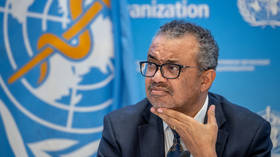The Economist names bloodiest war of 2022

The bloodiest conflict in the world last year was not in Ukraine but in Ethiopia, The Economist claimed on Monday, citing Comfort Ero, the head of the think-tank Crisis Group.
“No estimate for Ukraine is as high” as the 600,000 non-combatants that reportedly lost their lives in the Tigray War between 2020 and 2022, the outlet concluded.
Figures from the Office of the United Nations High Commissioner for Human Rights (OHCHR) suggest approximately 22,000 civilian casualties in Ukraine, which breaks down to just over 8,000 deaths and 14,000 injured in the conflict as of March 2023.
Human Rights Watch and Amnesty International have both criticized the international community for not doing enough to address the Tigray crisis and for failing to hold accountable those responsible for the atrocities. UN Secretary-General Antonio Guterres has also repeatedly called for more global attention to the conflict, which ended in November 2022 after a peace deal was signed.
Although the war in Tigray has “ended,” The Economist has expressed fears of further ethnic conflict.
“While government troops were distracted by the war in Tigray, members of Ethiopia’s largest ethnic group, the Oromo, revived an old insurgency, and are trying to drive other ethnic groups out of their home region,” it stated.
The two-year-long armed conflict in Tigray is said to be the result of Ethiopia’s long-standing political and ethnic divisions, as well as the country’s complex federal system. Tensions between the Ethiopian government and the Tigrayan People’s Liberation Front grew as Amhara militias and Eritrean troops sided with the Ethiopian government. The crisis allegedly resulted in a blockade of Tigray, preventing humanitarian aid from reaching residents.
According to The Economist, as attention has shifted to the “great-power rivalry between America, Russia, and China,” conflicts in “the rest of the world” are becoming worse. “The number of people who have been forced to flee their homes has doubled in the past decade, to roughly 100m. Even as global poverty has retreated, the number of desperate people needing emergency aid has doubled since 2020, to 340m. Some 80% of this is driven by conflict,” the outlet added.













